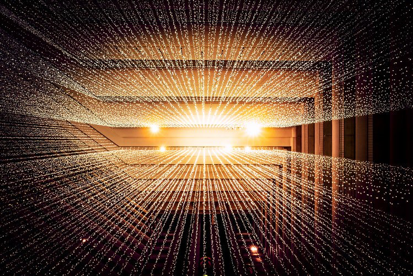7 New Technologies to Help You Bust Out of the Box
By: Rudy Lukez
Director, ERP Product Marketing, Oracle
When first conceived in the last century, enterprise resource planning systems (ERP) were boxed into the corner of “back-office solutions.” Even when they first began to move to the cloud, this boxed-in thinking tended to constrain the way that ERP systems were developed and used.
But times have changed, and ERP is busting out of the box. At Oracle OpenWorld last month, two connected trends demonstrated this evolution:
- Cloud solutions have gained rapid and stunning adoption in every industry across the globe
- The cloud—from applications to infrastructure—is the primary foundation for next-generation business technologies
These next-generation technologies were the talk of the show, from keynotes to smaller sessions to meetings over coffee. They fall into seven categories:
- Machine Learning (ML) – The ability of computers and their systems to logically learn and automatically evolve from data inputs rather than programing
- Artificial Intelligence (AI) – Software that uses machine learning to analyze business activities, models and processes, continually adjusting its own performance and making recommendations for better business results; also referred to as “adaptive intelligence”
- Augmented Reality (AR) – Real, physical environments overlaid with additive images and information derived from business data; it is similar to virtual reality but includes connections to real-life business scenarios
- Blockchain – Encrypted, secure, decentralized and shared ledgers used to sequentially document, track and update (“chain”) data with historical and current ownership transactions (“blocks”)
- Chatbot – AI software that mimics a person as it participates in spoken or text conversations with humans; also known as a “talkbot”
- Internet of Things (IoT) – Networks of physical devices embedded with software and sensors that collect and share data with decision-making or information-collecting applications
- Robotic Process Automation (RPA) – Software robots or AI workers who automate human-intensive clerical processes, such as invoice matching; RPA often leverages “touchless processing” software and hardware (e.g. multi-sheet optical scanners) to further automate and eliminate human clerical tasks
Each category by itself has fascinating real-life applicability. Take, for example, blockchain. One OpenWorld session highlighted four rapidly evolving blockchain usage patterns: tracking things of value, securing B2B integrations, decentralizing record storage, and maintaining and tracking provenance of all types of products and materials. Each of these cases can interact autonomously with finance and supply chain cloud applications using the secure blockchain ledger as the source of truth.
Another session delved into the combined potential of blockchain, chatbots and machine learning. One use case: automation of minimum/maximum stocking levels tied to service level agreements. AI can ingest data to calculate standard deviation, lead time and related items to adjust minimum and maximum inventories, along with safety stock. This AI activity is tied autonomously to supply chain and finance systems to improve efficiency and accuracy.
Technology that Works Together Across the Cloud
What’s equally fascinating is how these seven next-generation technologies can work beyond silos across line-of-business collaborations. Consider how supply chain and finance cloud applications are working together with AI and IoT. One session presented five real use case examples that start with IoT:
- Asset Monitoring – Sensors collect singular data regarding the health and utilization of physical assets. The data flows in the cloud where AI analyzes health and utilization inputs to issue capital work orders, if needed, and commit results and status into accounting software (for costs) and supply chain clouds (for scheduling) with no human intervention.
- Production Monitoring – Sensors collect usage and health data of manufacturing equipment used across a factory. AI uses the sensor data to determine if the equipment needs regular preventive maintenance or exhibits failure risk, which then populates and drives cloud finance and supply chain applications.
- Fleet Monitoring – As vehicles engage their routes, IoT sensors collect movement and usage data. This data interacts together with AI, supply chain and finance applications to predict lateness and initiate actions based on predefined policies.
- Connected Employees – Workers wearing IoT sensors send health and safety data into an AI solution. If the data indicates potential danger or other concerns, finance, HR and supply chain systems can be updated with schedule and cost adjustments accordingly—again, all with no human interaction.
- Service Monitoring – Products at customer locations can be fitted with IoT sensors to monitor service time and health conditions. As runtime and health data flows into an AI system, finance and supply chain clouds can collaborate on corrective actions and record associated work orders and costs.
Together, these sessions reinforced the growing influence and importance of the seven next-generation technologies. Crucially, these emerging technologies are built to run in the cloud. They cannot interact effectively with on-premises systems, and they are certainly not constrained to life in a box.
There is a symbiotic relationship between cloud applications—finance, supply chain, HR and customer experience—and the seven next-generation technologies, with many examples and use cases on display at Oracle OpenWorld.
From the vantage point of emerging technologies, the “back office” is no longer confined to the back. It is all about the enterprise—front and back—inside and outside the old box. The box will soon be buried as ERP in the cloud becomes a core foundation for delivering and utilizing next generation technologies.
If cloud ERP has a manifesto, it is: the back-office box is dead. Long live the cloud’s new role as the foundation for next-generation technologies.
